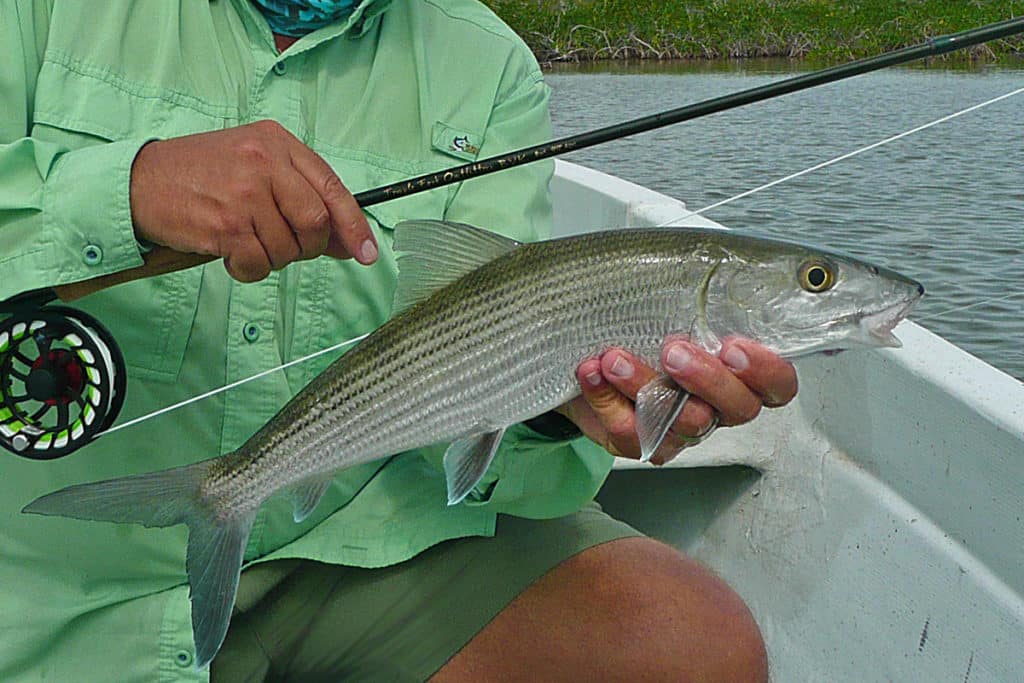
As a veteran flats guide, I’ve seen days when bonefish are surprisingly voracious and attack even a bright ’cuda streamer on a wire leader. Of course, there are many more days when the bones are insanely persnickety. Then, only the right fly induces a strike. Following, I offer some tips to help you identify key features of bonefish flies and help you pick the pattern best suited for different situations.
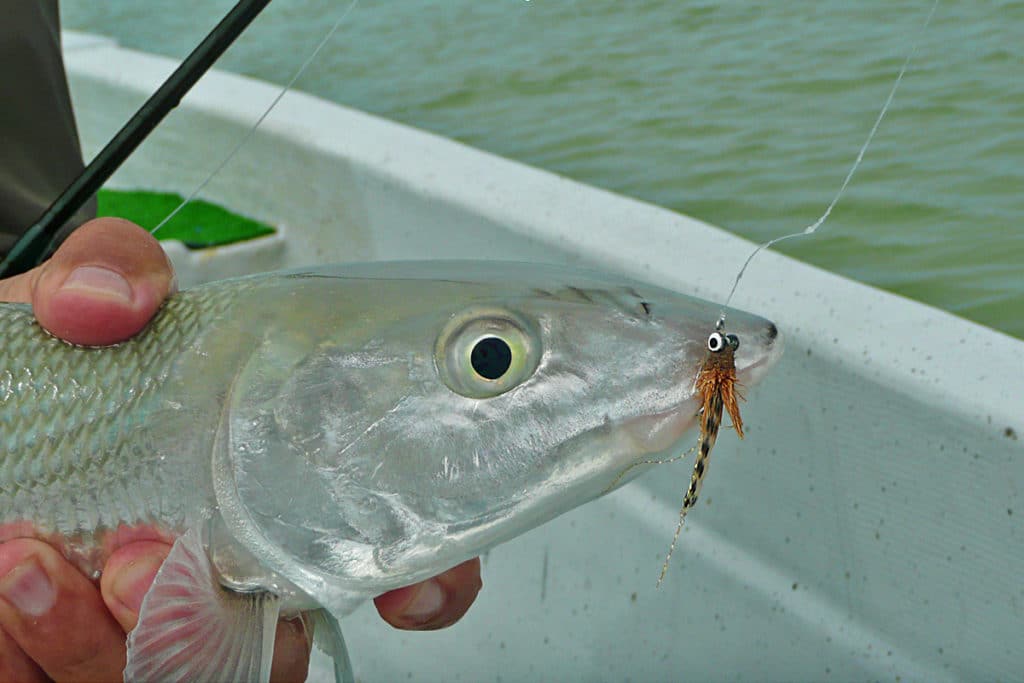
Most bonefish fly designs are pretty basic: a wing, which helps the point of the hook ride upward and is made of bucktail, squirrel tail, foxtail, or synthetic fibers, like craft fur, to provide a little bulk; a body, mostly fashioned out of chenille, Mylar or monofilament wrapped around the hook shank for a segmented look; eyes (weighted or not), and a tail, often made of marabou, rabbit strip, Flashabou or Krystal Flash.
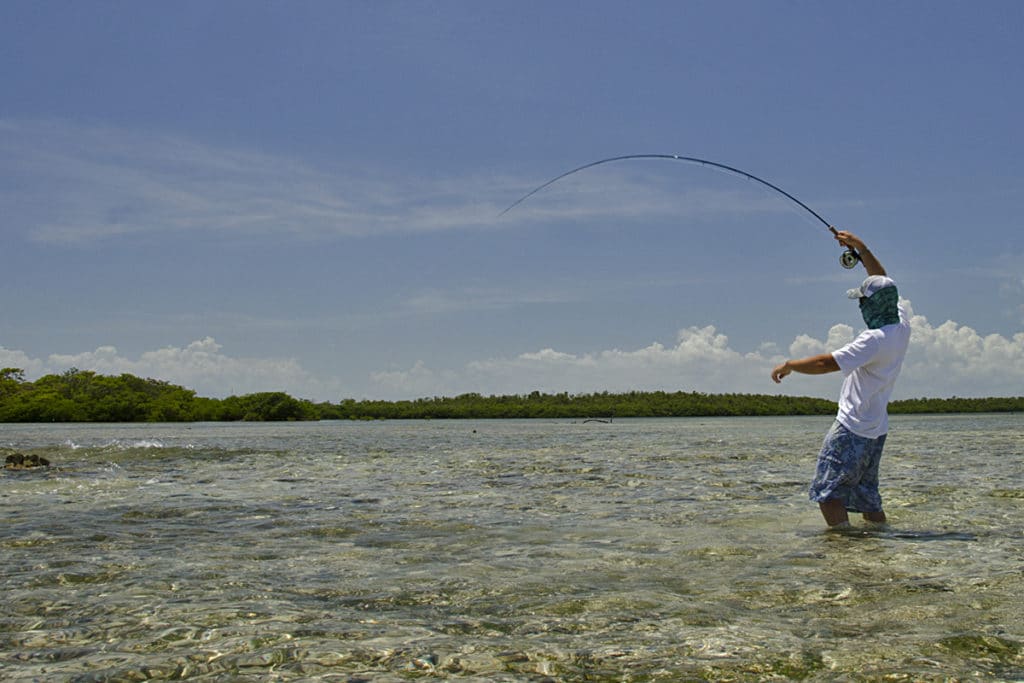
Half the fun is making a fly look juicy enough to light up a fish and get a take. And natural materials can work together with synthetics to create magic. Some of my favorite patterns combine rabbit fur — which undulates and breathes in the water, making the fly come to life — with the sparkle of Krystal Flash and rubber legs for extra action and a more lifelike appearance. Take into account, however, that sparsely tied flies are often best. They cast well, sink fast without much weight, and they land with minimal splash.
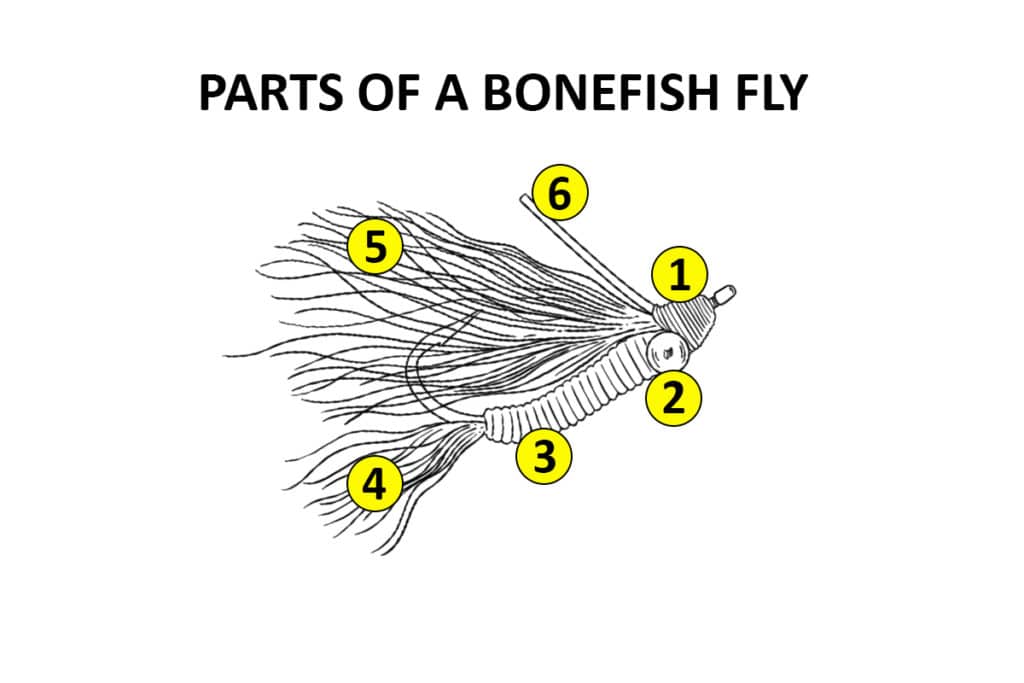
Bonefish Fly Features
1. Head: Thread coated in head cement or epoxy
2. Eyes: Nylon, bead chain or lead dumbbells
3. Body: chenille, Mylar or mono
4. Tail: Krystal Flash, marabou or craft fur
5. Wing: Natural or synthetic hair
6. Weed Guard: Single or double strand of monofilament
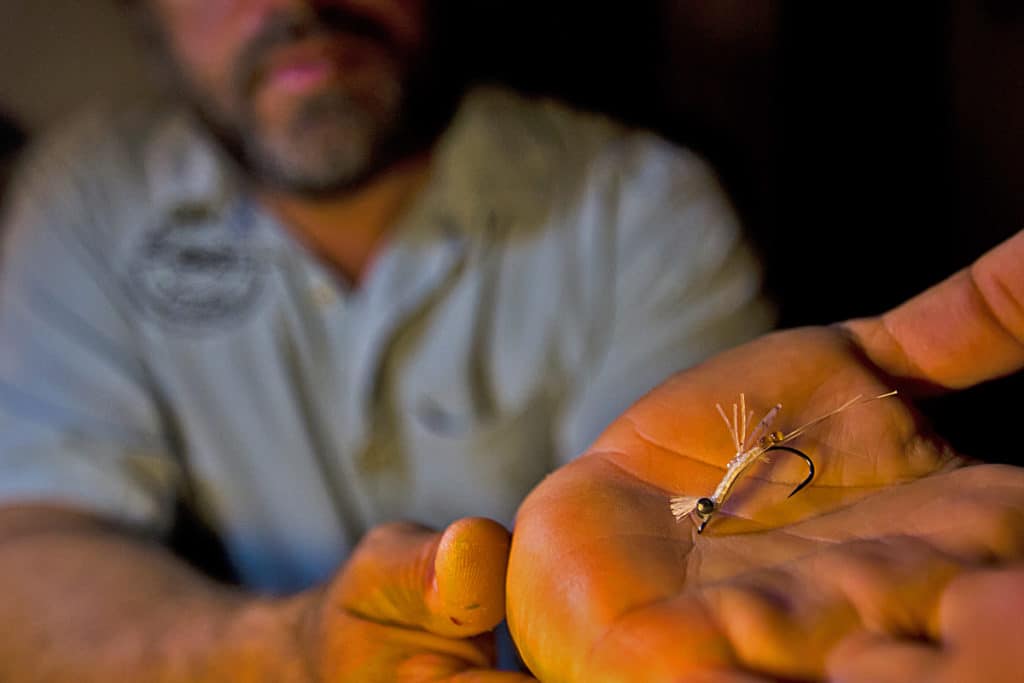
There’s plenty of room for creativity in coming up with a fly pattern to pique the interest of a bonefish. And, while realistic imitations are not always productive, it’s still best to emulate, if loosely, shrimp, crabs, worms and the small finfish increasingly favored by the larger bonefish.
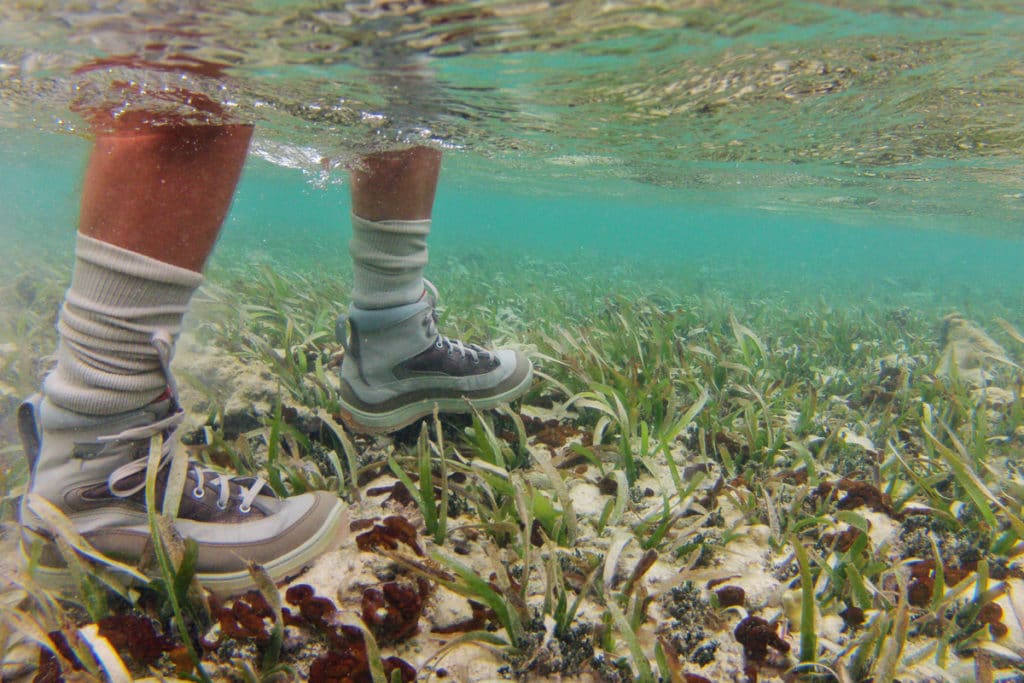
Be it crustaceans, small fish or invertebrates, all the life forms bonefish consider food depend largely on camouflage to survive. Their coloration typically blends with the grass, coral or sand on the bottom. So wherever you happen to target bonefish, your flies should look like they belong in the surroundings.
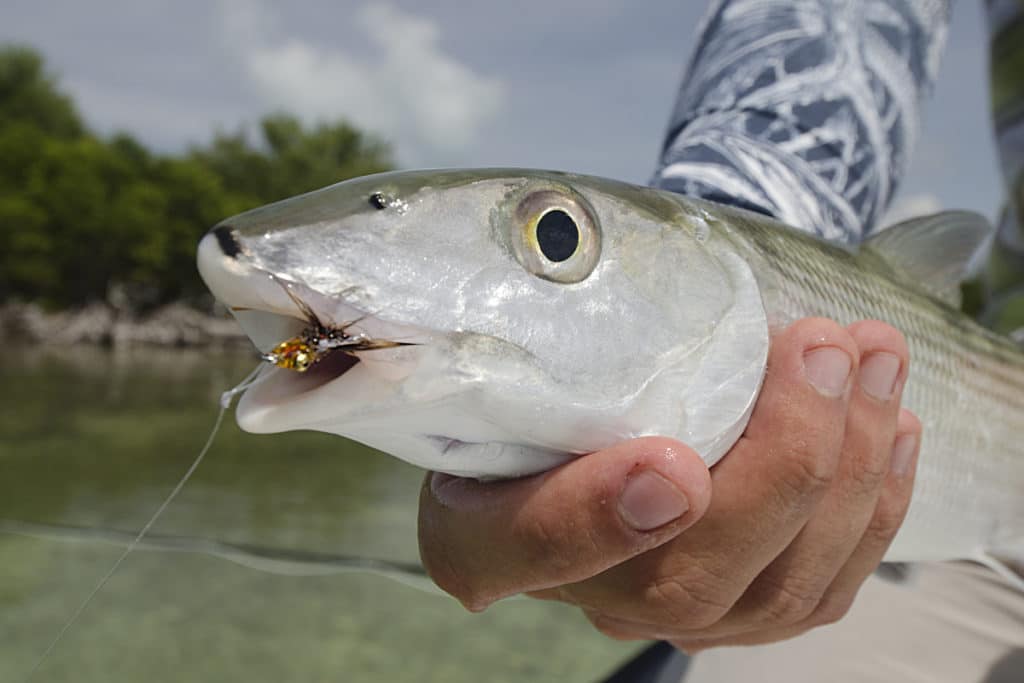
Bonefish flies come in a gamut of colors, but tans, browns, pinks and white cover the spectrum of common bonefish forage. However, a bit of green, chartreuse, orange or yellow often helps the fish detect a fly. And a couple of wraps of crystal chenille or a few strands of Flashabou or similar flashy material further enhances its appearance. For instance, I find that purple and pink UV Krystal Flash resemble the appendages of small crustaceans and make flies more attractive and more visible to foraging bonefish.
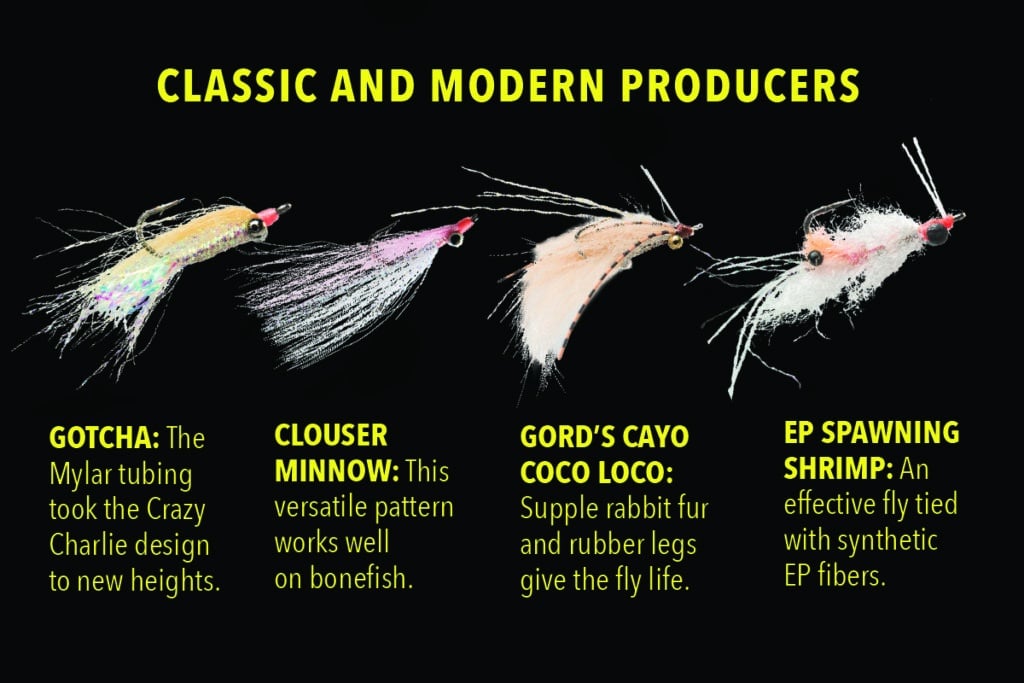
Old classics like the Crazy Charlie, Gotcha and Clouser Minnow, and more modern producers like the EP Spawning Shrimp and Gord’s Cayo Coco Loco, owe their effectiveness to various distinctive features, not just the color and size. Myriad materials — from natural animal hairs and feathers to synthetic simulations — produce the desired looks and action. And whether you buy the flies or tie your own, you should be familiar with some of those materials and how they make a fly more effective.
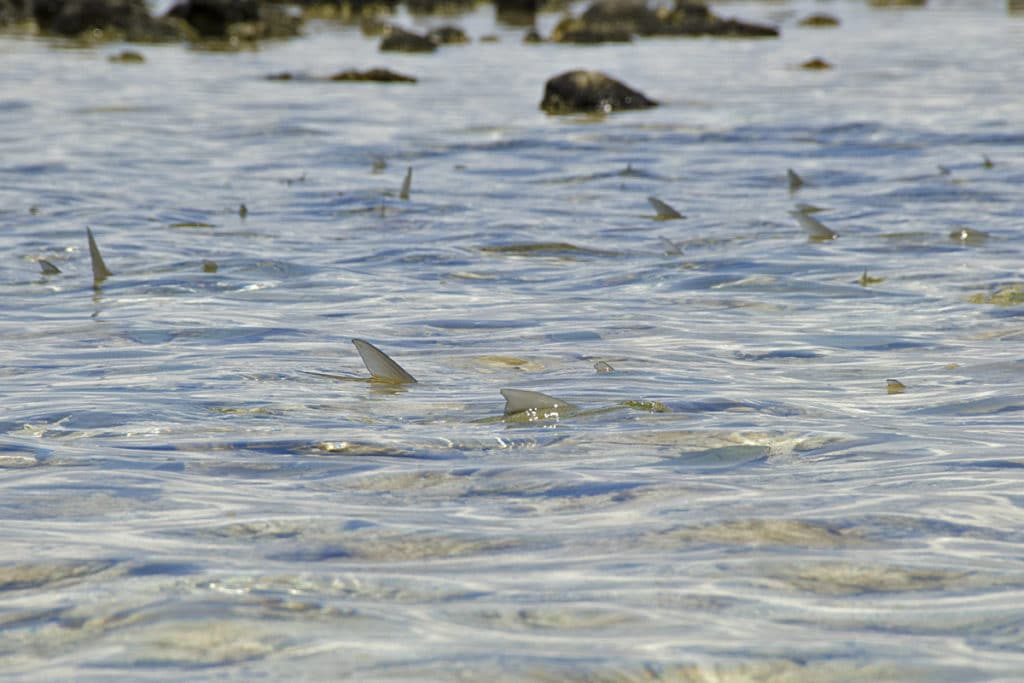
While an unweighted fly might be the ticket for skittish bones in 12 inches of water, it’s best to carry a selection with different weights to match the water depth, as well as the strength of the wind and current, also factors on the weight a fly needs to reach bottom.
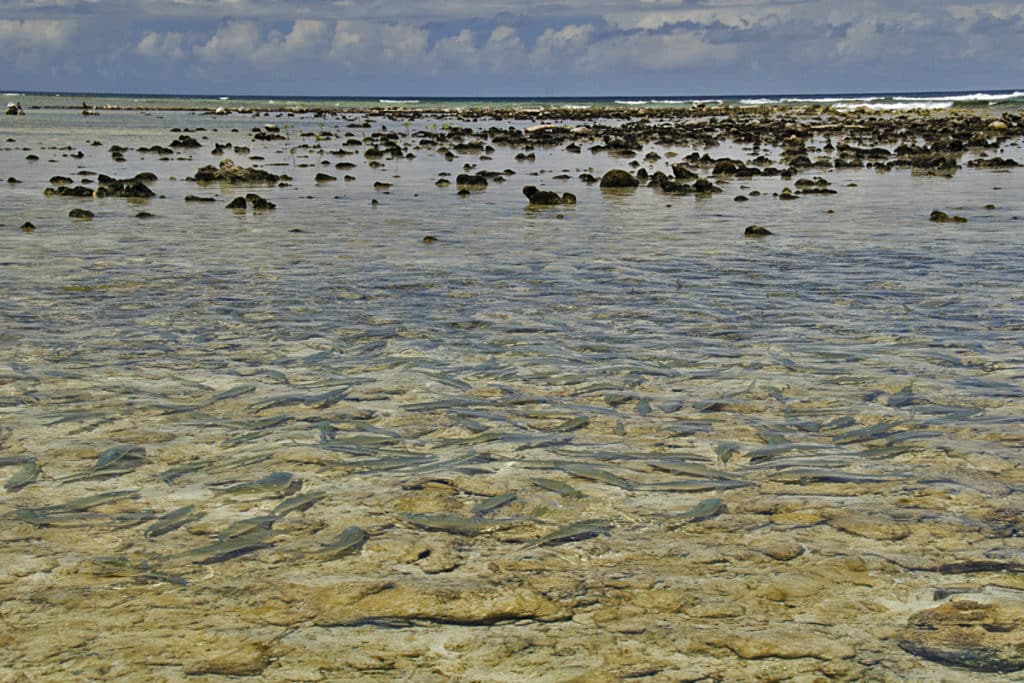
Most weightless bonefish flies don black nylon eyes or a facsimile fashioned out of monofilament line with the ends melted into a ball. Those are ideal for targeting bones tailing or milling around in very skinny water.
Small bead-chain eyes provide the next step up in weight class. Then come larger bead-chain eyes, followed by lead or tungsten dumbbell eyes of several weights and sizes.
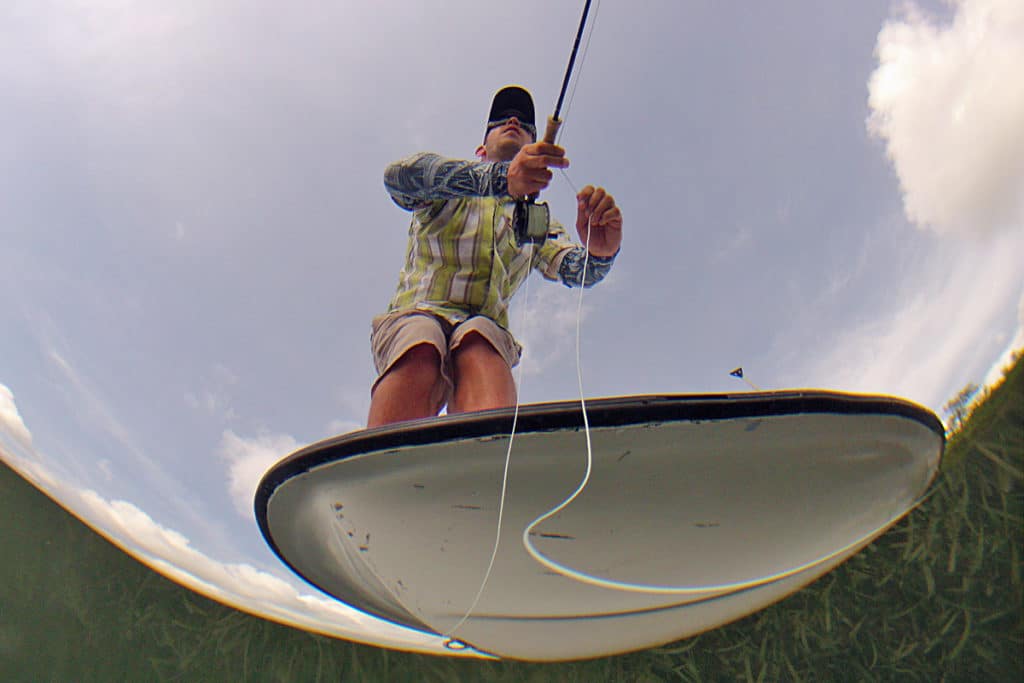
If a fly produces during the lower tide stages, use the same pattern with heavier eyes when the tide rises. Just remember that too much weight makes a fly hard to cast and land with a crash that sends bonefish hightailing for the horizon.
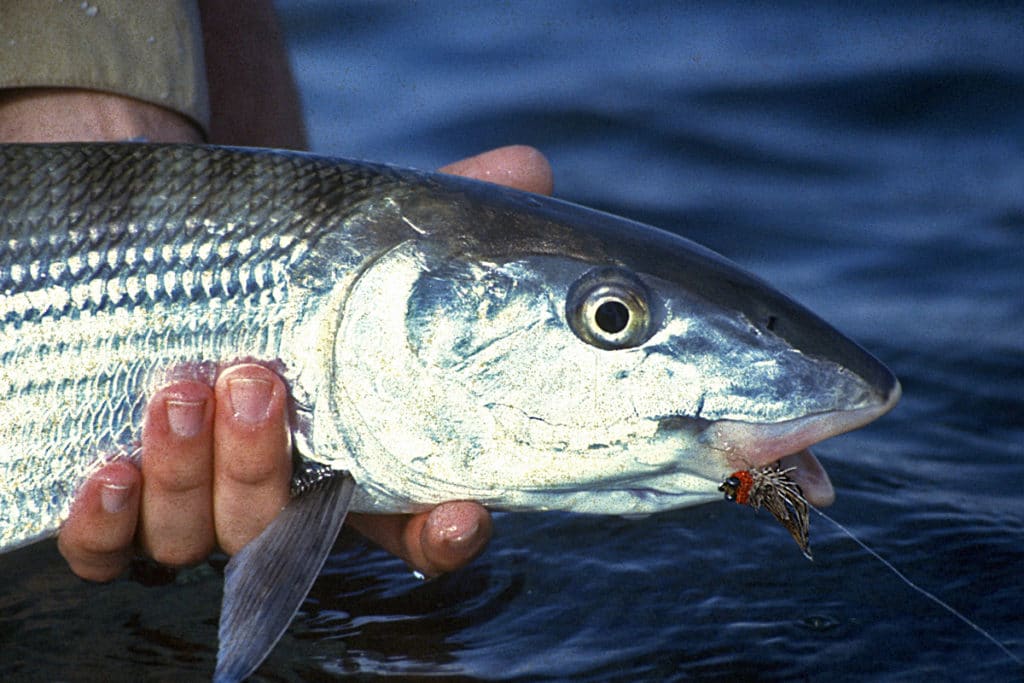
Depending on the location, the primary forage and its size differ greatly. In South Florida, bones gorge on fairly large shrimp and crabs. In the Bahamas, on the other hand, the fish have a more limited diet of smaller critters. So it’s imperative that you tailor your fly selection accordingly.
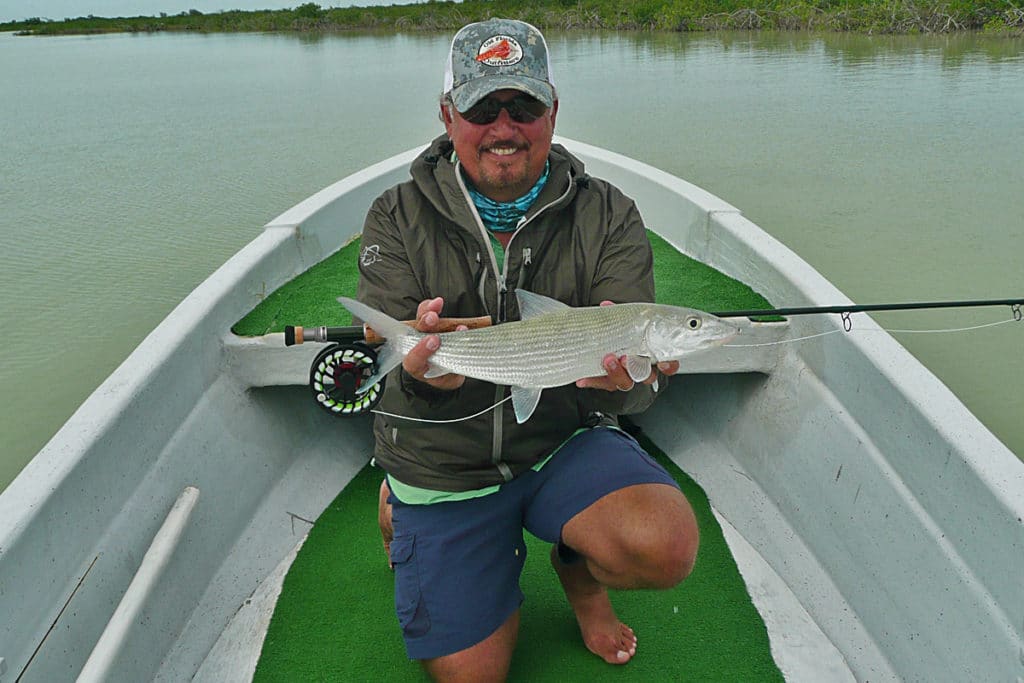
Do some research about your destination before your next bonefishing trip. Find out what the flats look like and what fly patterns are recommended. Your local fly shop can often provide valuable information and even connect you with anglers who recently fished the place you are headed.
Size, color, weight, shape and materials all matter. So choose wisely and carry enough of a fly assortment to provide you options for success.









